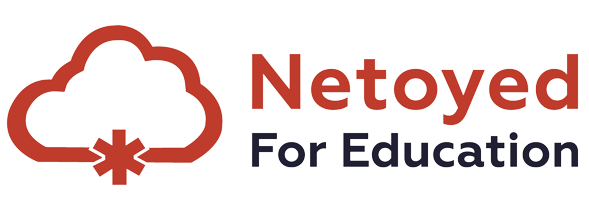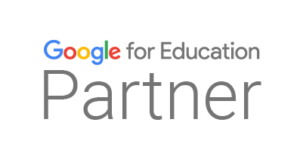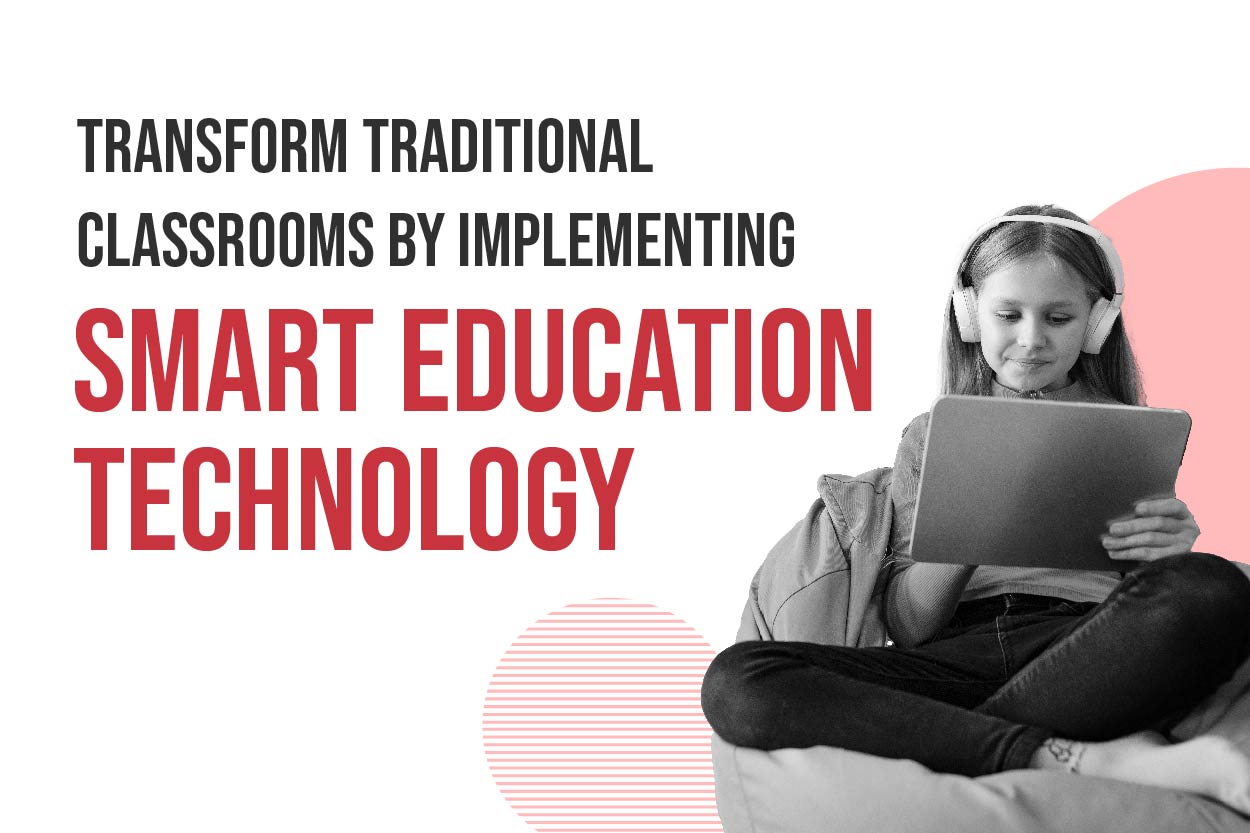Education technology is vastly evolving. The introduction of new classroom management strategies and tools is paving the way for a futuristic model of education for schools. In this digital age, classrooms need more than whiteboards, projectors and markers to create an effective learning environment.
Traditional classrooms are no longer enough to foster the holistic development of students and teachers. For students to succeed in the fast-paced digital era, the transformation of their educational environment is just as important as their curriculum.
Take a deeper look at smart classrooms and how to implement smart technology in classrooms effectively in this article.
Understanding the significance of smart classes in K-12 education
Schools build the foundation of education and literacy for children. School education ensures students grow up into well-rounded and successful employees, entrepreneurs and leaders. K-12 curriculums and education need to be shaped according to technological trends. They don’t just help students but also educators to upskill themselves and stay updated with current career trends.
Introducing smart classes to K-12 schools doesn’t make education complex or difficult for students, rather makes learning more fun and worthwhile. Lesser baggage on their shoulders and more space for knowledge in their minds make them retain more from smart classes than they do from regular classes.
By teaching students how to work with digital tools and smart technology from a younger age, we allow them to expand their knowledge base and explore many opportunities. It increases their employability and their adaptability to changing technologies and trends in the world.
What makes smart classrooms different from regular classrooms?
For a clearer look into how smart classrooms are different from regular classrooms, refer to the comparison below:
| Features | Traditional Classrooms | Smart Classrooms |
| Classroom Tools | Use of outdated offline learning model with whiteboard-marker or smart boards. | Use of smart learning models with interactive display panels and cloud-based classroom tools. |
| Accessibility | There are no flexible learning methods as students don’t have any other options except to be present in class physically in all lectures. One sick day, and you’re left behind. | Flexible learning with smart tools like Chromebooks and Virtual Desktop Infrastructure that allow students to access learning material easily at any time, from any location. |
| Personalization | Traditional classrooms have a generic teaching model, they are not personalized for students and their unique academic needs. | Smart classrooms are personalized for each student to learn in a dynamic environment at their own pace and methods. |
| Creativity | Regular classrooms limit the creativity of both educators and students as they bind them to physical tools. | Smart classrooms allow teachers to use their creativity in teaching students using a wide variety of digital tools. Whereas for students, smart classrooms open a plethora of opportunities for practical learning. |
| Infrastructure and Resources | Regular classrooms require more investment in infrastructure and resources. Regular classrooms need separate computer labs for digital classes and require IT and tech support teams as well. | Smart classrooms are personalized for each student to learn in a dynamic environment at their own pace and methods. |
| Data Privacy and Security | Regular classrooms rely on desktops and licensed physical applications for learning and therefore run a higher data security risk. | Smart classrooms utilize virtual multi-cloud-based infrastructure and networks to ensure student privacy and data are protected. |
| Personal Development | With traditional methods, grading and assessments become a tedious task. The students are not instantly alerted with feedback, which often makes the feedback ineffective. | Smart classrooms effectively aid the personal development of both students and educators by providing them with digital exposure and relying on a project-based learning model. |
| Grading and Feedback | Smart classrooms effectively aid the personal development of both students and educators by providing them with digital exposure and relying on a project-based learning model. | With automated grading and assessments through learning management systems, teachers can focus on providing effective feedback to students instantly and help them learn better. |
| Knowledge Retention | With digital education tools and platforms like Google Classroom, the knowledge retention rate among students increases rapidly. These tools allow students to learn at their own pace and for teachers to teach each student in the best way. | With traditional methods, grading and assessments become a tedious tasks. The students are not instantly alerted with feedback, which often makes the feedback ineffective. |
Components of an Effective Smart Classroom
Effective smart learning classrooms require digital tools and teaching models that utilize robust instructional technology. Together, these create the best learning environment for students. An ideal digitally sound classroom is a composite of:
- Interactive Flat Display Panels: Smart interactive display panels or IFDPs are much like whiteboards, but much more accessible. They allow teachers to foster interactive classroom learning through collaborative display panels.
- Student response systems: Instant student response and feedback systems to submit responses and get instant feedback during lectures. Through this system, teachers save time on manually grading tests & assignments and can focus on guiding students through instant feedback.
- Virtual desktop infrastructure: Virtual desktop infrastructure hosts an entire school network on a virtual machine (hypervisor). Students and staff can access it at any time and anywhere. It allows room for flexible learning and for students to keep up with lectures on a secure and collaborative platform.
- Secure LMS: Learning management systems allow the school to host course material, tests and assignments on a single platform. It makes it easy for students to access and navigate through course materials from any device using encrypted credentials.
- Chromebooks: Chromebooks are lightweight, durable and highly efficient smart devices. Chromebooks for students are the best as they are affordable and easy to carry around. The Chrome OS is also one of the most secure operating systems, ensuring data security and privacy.
- Robust and Secure Wi-Fi Connectivity: All of these digital learning tools are ineffective without a secure and robust internet connection. With the use of Smart-Fi, you can host all your school networks virtually safely and efficiently.
How can you implement smart education technology successfully?
Transitioning into smart education technology can be especially straining for schools with minimal or no knowledge of smart campus tools and protocols. Here are some steps you can follow to ensure the effective implementation of a smart learning model in schools:
- Create a comprehensive plan: Define the goals you wish to achieve by implementing education technology in your classrooms and come up with a comprehensive action plan that aligns with your objectives.
- Focus on professional development & digital training for teachers: Invest in the professional training and development of educators to help them get accustomed to digital education tools so they can convey information to students effectively.
- Integrate well-researched and smart content in your learning plan: The content plan for smart classrooms cannot be the same as regular classrooms as smart classrooms are focused on project-based learning. Integrate content that is bite-sized, easy to understand and interpret for students. Ensure that the lecture content aligns with the objectives of your smart education plan.
- Establish organizational digital safety protocols: Educating students and teachers about safety protocols is crucial to creating an effective smart learning platform. To create a secure learning environment, establishing data security protocols is a must.
- Adopt a model of consistent evaluation and adaptation: Learning and innovations are endless, the hack to a consistent smart learning model is to regularly evaluate and implement updated strategies and technologies.
Transform your campus with education technology and transition into a smart learning model with ease and effectiveness. With Netoyed for Education, you can access a range of services such as Smart-Fi solutions, VDI Solutions, and more.
Contact us and get a personalized solution to transform your classrooms. Foster a smart and holistic learning model with Netoyed for Education.




 1st Floor, H-31, Sector 63,
1st Floor, H-31, Sector 63,
helpful information